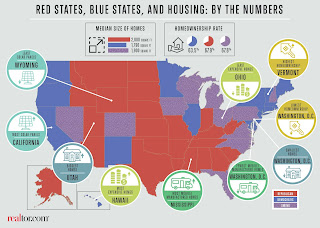Looking at the graph below, one can see the curves of median prices and average prices, month by month. They are similar, but not equal though:
- over the period of the last two years, the median price went up 18%, from a median of $813k in Jan. 2015 to a median of $963k in Dec. of 2016.
- this is a much higher appreciation than the average price, which went up only 6% from $1.13 million in Jan. 2015 to $1.2 million the month of Dec. 2016.
As a reminder, this median price means that half of all buyers bought a house over $963k, and half bought a house under that price.
This is difficult to interpret completely: it does not mean necessarily that the value of a specific house will go down at that time, nor that it is not a good time to sell in November or December. What it does mean instead is that statistically, more houses of a lower value sell during those periods, and this could be because of many reasons.
One of them, for instance, could be that people in a higher price range can wait for a "better" time to sell: the traditionally "active" real estate season of January to June. It could be that more people "have" to sell at the end of the year; more pressure means less room for negotiation.
What is also true though is that a beautiful remodeled home in a desirable neighborhood will probably not loose any value even at the end of the year, at least in our area of the US.
Finally, as a reminder that we always have to take graphs and statistics with a grain of salt, the same figures translate into the following:
Average prices for 2015: $1.246 million
for 2016: $1.292 million. This is an increase of 3.7%
Median price for 2015: $950k
for 2016: $1.02 million. This is an increase of 7.4%
This is a better representation of the market as we follow the market over the years: from year to year, instead of from a given month to another given month.
To make sense of the evolution of prices in your own local area, or to price your home, do contact me.
Thank you for reading,
Francis
PS: Detailed info per County always available on my web site at: www.frolland.com under the tab: "Local Info and Stats".
Santa Clara County 2016 yearly report.
San Mateo County 2016 yearly report.















